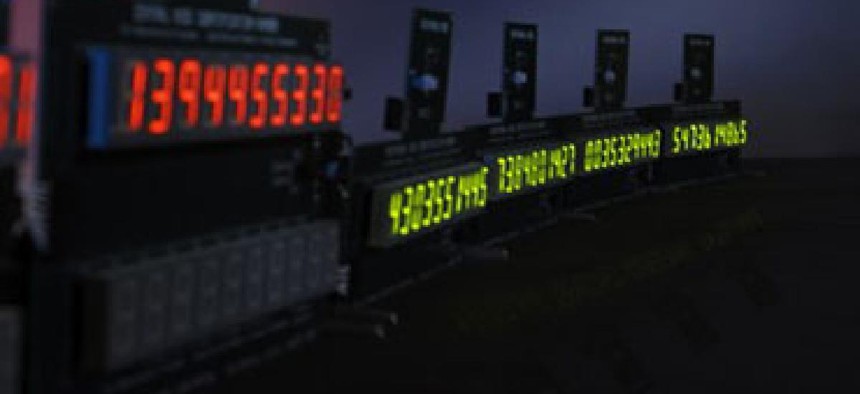Uncrackable encryption could secure more than weapons

A novel approach to encrypting nuclear weapons could promise unprecedented security for other applications, such as communications and the IT gear supply chain.

An encryption concept called Intrinsic Use Control uses a nuclear weapon’s fluctuating radiation fields to create use control numbers, and would be able to protect the weapon and its components from unauthorized use. Photo by Julie Russell and Bob Sickles/LLNL
A novel approach to encrypting nuclear weapons could promise unprecedented security for other applications in need of encoded protection, such as communications and the IT supply chain.
The concept harnesses the native signature of a nuclear weapon's fluctuating radiation field to develop a complex identification code for each component. The coding can lock down those components with an almost unknowable key if they're tampered with, essentially allowing the weapon to protect itself from outside meddling.
Because the code is randomly generated by its unique nuclear source, it's not known by any person, and therefore, the possibility that it could be replicated is substantially reduced, said Mark Hart, a scientist and engineer at Lawrence Livermore National Laboratory.
Hart has been working on the Intrinsic Use Control concept since 2002. It won the National Nuclear Security Administration's 2015 Surety Transformation Initiative Award for its innovation and ironclad security.
"Using the random process of nuclear radioactive decay is the gold standard of random number generators," Hart said. "You'd have a better chance of winning both Mega Millions and Powerball on the same day than getting control of IUC-protected components."
The coding is imprinted on a nuclear weapon's components during assembly, with the unique IDs known only to the weapon. Any anomaly in the verification process, spurred by attempted removal or replacement of a protected component, shuts down all the components on the weapon, rendering it unusable, Hart said.
Although it might sound as though the technique has a very specific use, Hart told FCW that other agencies and industry could harness it to protect other IT hardware and communications.
All radiation sources decay -- from highly enriched uranium to everyday background radiation -- so IUC coding could easily be generated outside the nuclear weapons realm. For instance, the approach could be used in the manufacturing process of IT equipment destined for secure uses to prevent tampering and better secure the supply chain, Hart said.
The coding could eliminate insider threats by preventing people from adding counterfeit components or tampering with the equipment, he added.
Additionally, gear in point-to-point communications links could be loaded with a unique radiologically generated encryption key, rather than relying on a manufacturer's less-secure coding.
NEXT STORY: Striking a balance with mobile device security





